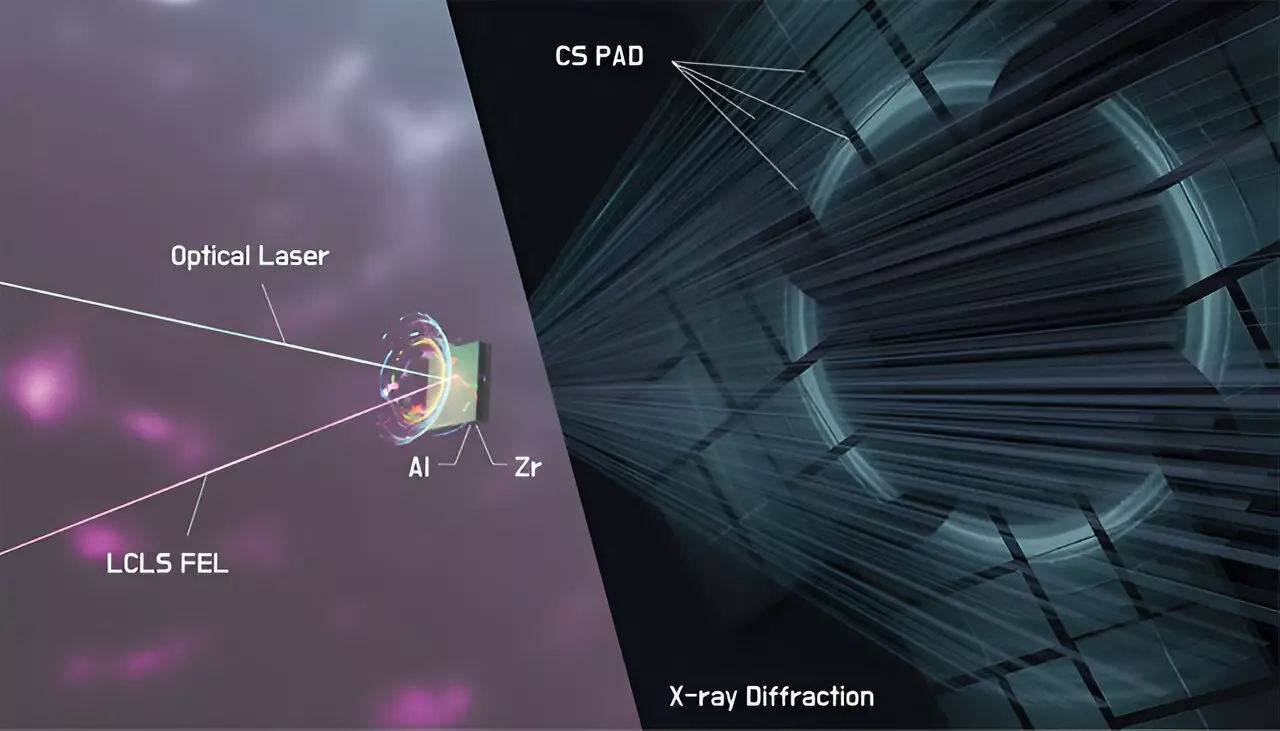Shock experiments serve as a crucial front in the battle to unveil the secrets of materials’ behaviors and properties under extreme physical conditions, such as those that might be encountered during planetary impacts by meteorites. These experiments are critical not just for deepening our understanding of materials science but also enhance our comprehension of cosmic events that could affect planetary surfaces. Despite the extensive research devoted to analyzing shock waves, a significant gap persists in our knowledge concerning the thermal states of materials post-shock and how these states affect their properties.
Innovative studies undertaken by scientists from Lawrence Livermore National Laboratory (LLNL) have enhanced the understanding of how certain materials, notably aluminum and zirconium, respond thermally following the release of shock waves. Using ultra-fast X-ray probes, these researchers have made significant strides in tracking the thermal responses of materials subjected to extreme shock conditions. The findings, published in the Journal of Applied Physics, revealed that the resultant temperatures were intriguingly elevated beyond what prior models had predicted.
This breakthrough results from sophisticated methodologies employed by the LLNL team, particularly the use of 100-femtosecond X-ray diffraction patterns to observe thermal evolutions in aluminum-zirconium composites. By applying a 120-picosecond laser pulse, the scientists were able to meticulously witness the time-dependent changes in temperature across a window ranging from five to seventy-five nanoseconds.
Understanding Shock Wave Dynamics
At their core, shock waves function as large-amplitude mechanical fluctuations that cause abrupt changes in material properties, including pressure, density, and temperature among others. This process is not reversible thermodynamically; a significant portion of the energy from a shock wave is converted into entropy and heat, which fundamentally alters the state of the materials involved. However, the true impact of these transformations—especially how they play out in different materials—requires a deeper dive into the underlying mechanisms.
The study unveiled that conventional hydrodynamic models, which rely on standard descriptions of mechanical strength in metals, fell short of explaining the thermal changes observed during the experiments. This raises important questions regarding the extent to which current theoretical frameworks can adequately account for the complexities of real-world materials, suggesting that additional strength-related mechanisms may influence thermal response during shock loading and unloading.
One of the critical discoveries of the LLNL research was the realization that a substantial fraction of energy transmitted by shock waves may be converted into heat due to inelastic deformation processes in materials. Co-author of the study, Mike Armstrong, pointed out that this finding could indicate a common occurrence in laser-driven shock experiments that has historically not received adequate recognition. The elevated post-shock temperatures hint at the likelihood of phase transformations in the material, which could fundamentally alter their physical properties, sometimes leading to unforeseen consequences.
Armstrong’s assertion highlights the need for a reconsideration of existing models that may not factor in additional heat-generating phenomena like void formation during shock release. Such insights could significantly elevate the predictability and accuracy of simulations used in various applications, including those related to planetary sciences.
Real-World Applications and Implications
The implications of these findings extend beyond academic curiosity; they could prove invaluable in critical real-world applications. One practical application lies in the effort to preserve magnetic records from planetary surfaces that may have undergone shocks due to frequent meteorite impacts. By understanding how shock dynamics affect material properties, researchers can develop robust models to predict and possibly mitigate damage resulting from such impacts.
With ongoing advancements in ultra-fast probing techniques, the potential for future studies to unravel even greater complexities within material responses under extreme conditions is immense. As we continue to explore the dynamic interplay between shock waves and the thermal states they induce, our foundational knowledge of material behavior is bound to expand, presenting new frontiers in material science research.
The exploration of shock-induced thermal dynamics not only uncovers fundamental aspects of material properties but also lays the groundwork for future innovations in science and technology. As researchers delve deeper into these phenomena, we stand to gain profound insights that can revolutionize our understanding of material behavior under extreme conditions.

